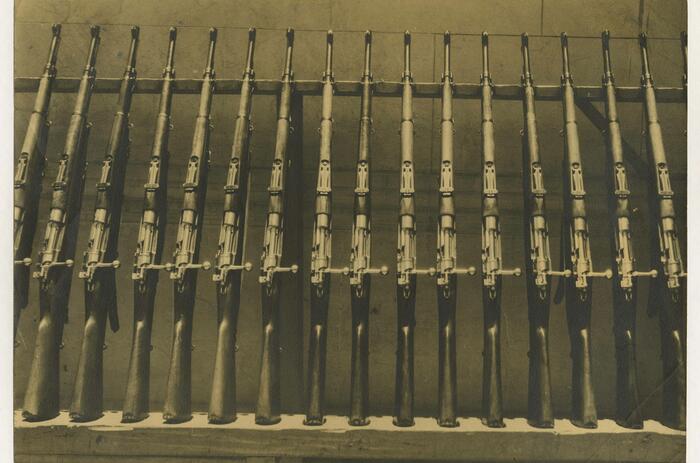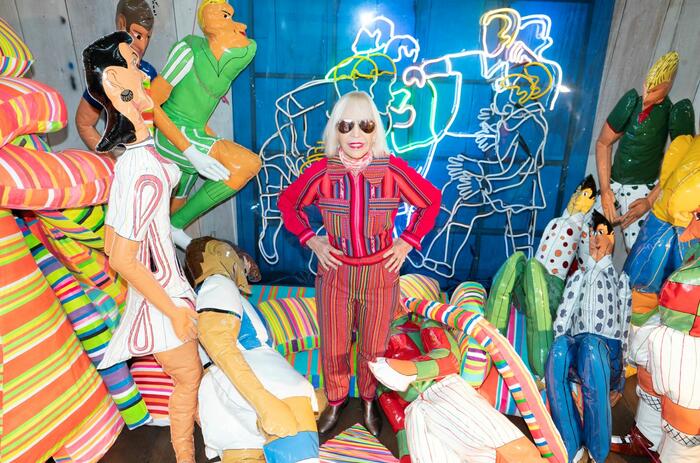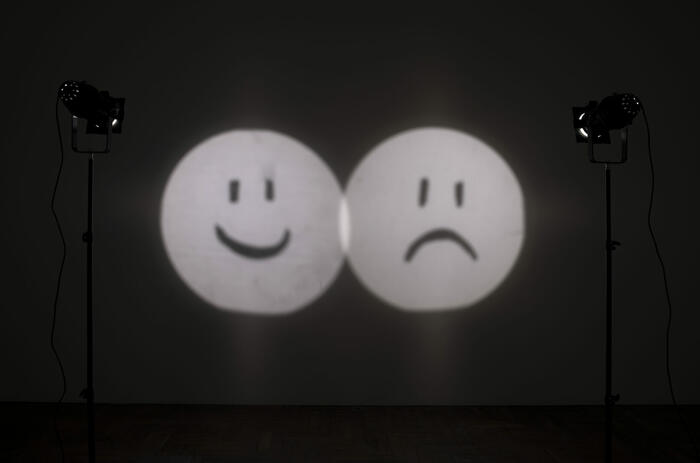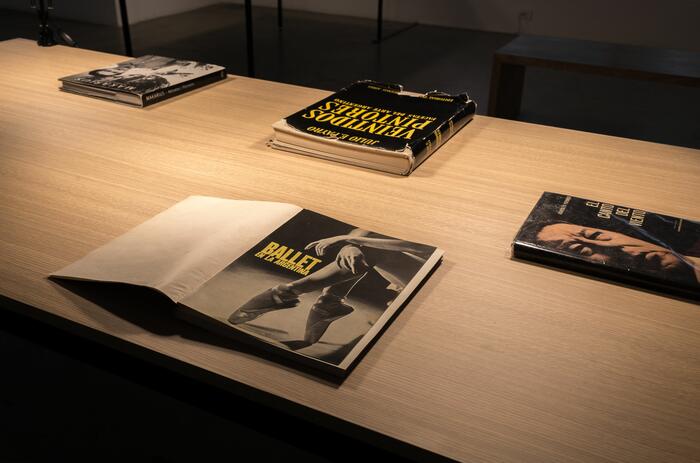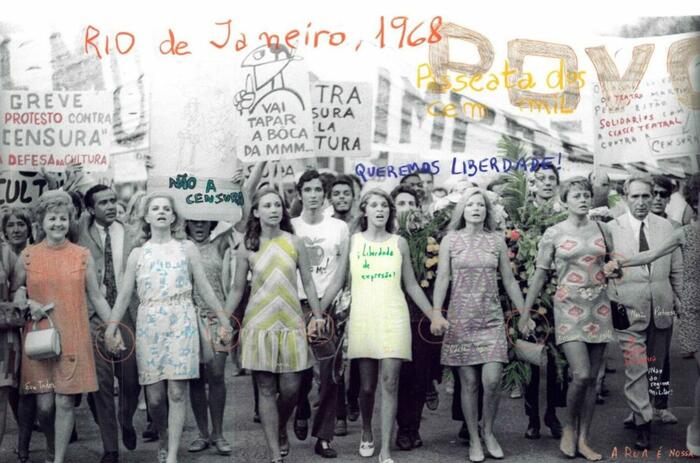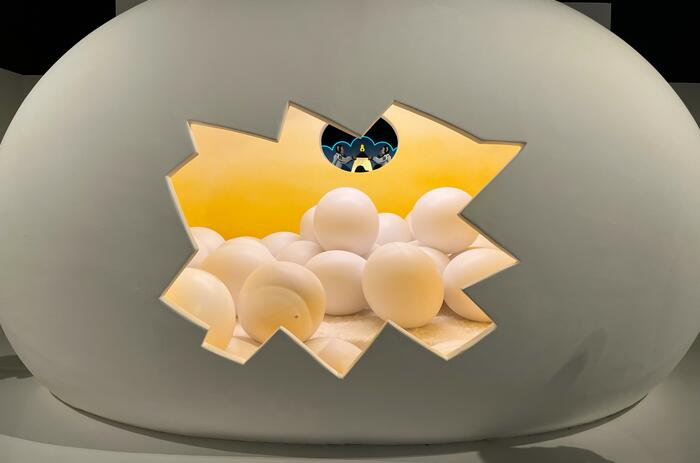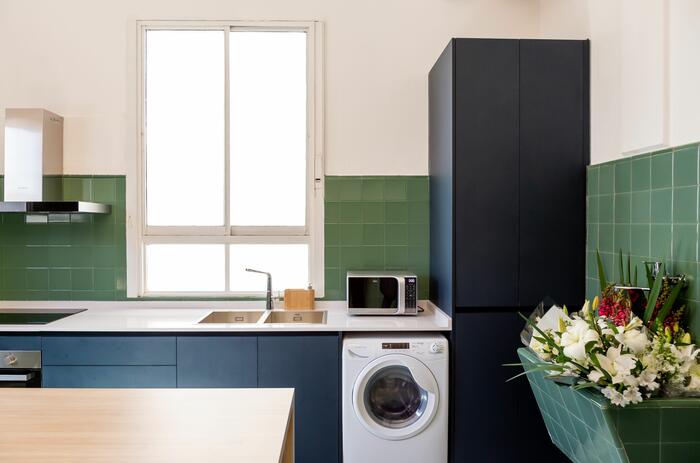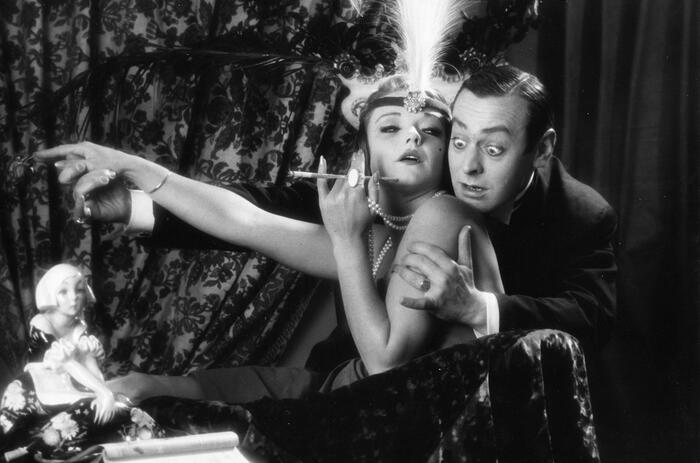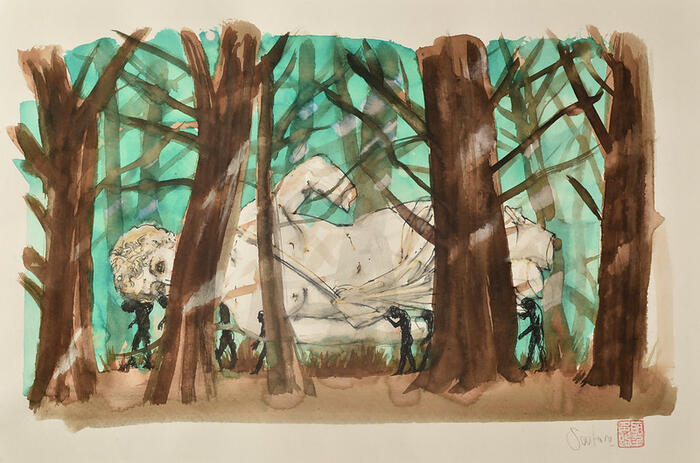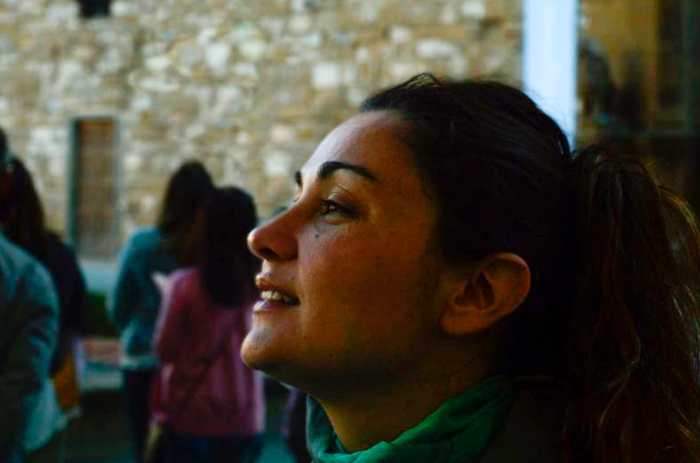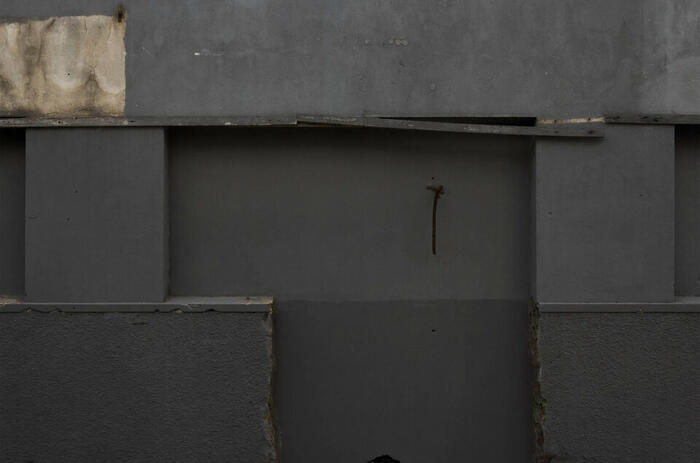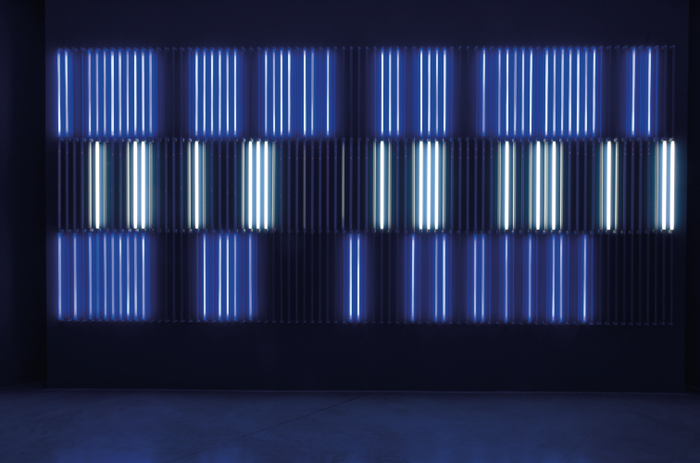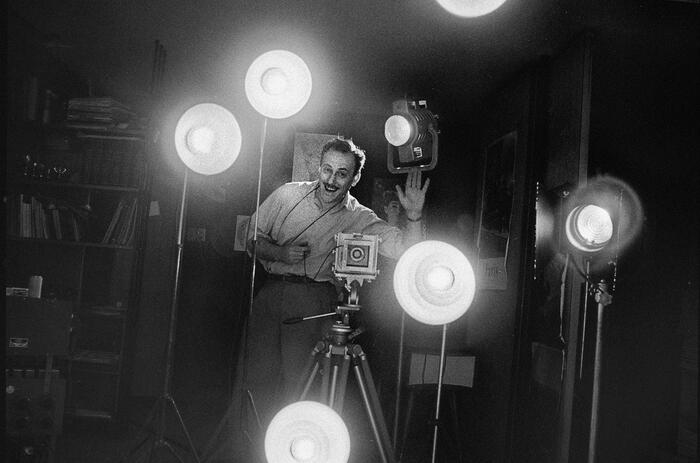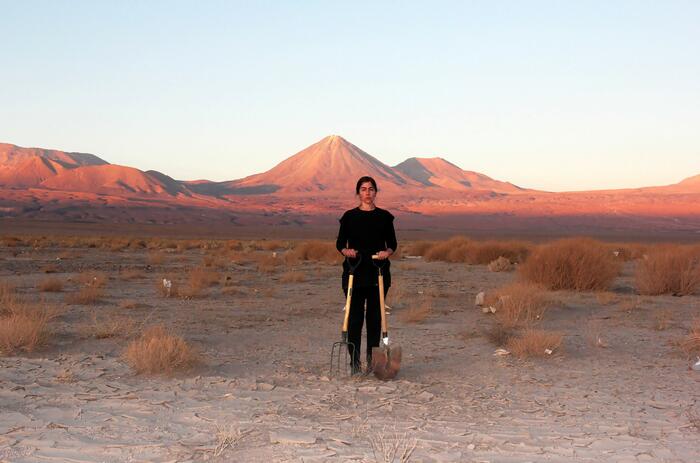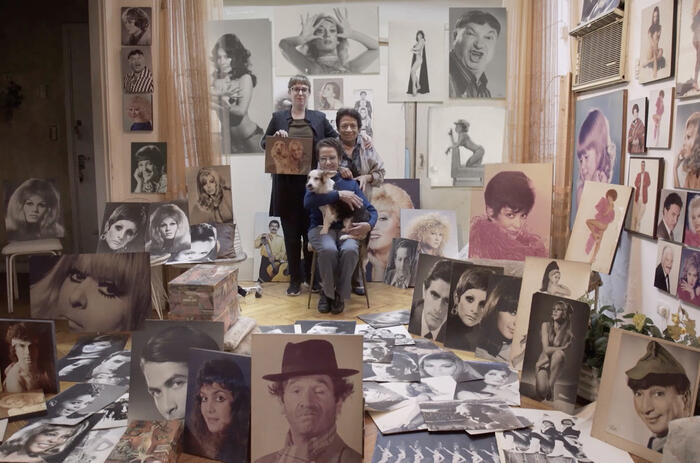ART AND IDENTITY IN THE 80'S AND 90'S ARGENTINE UNDERWORLD
Museo Moderno de Buenos Aires inaugurated Cultura Colibrí. Art and identity in the Argentine underworld of the 80s and 90s. With Fernando Noy as host artist, the exhibition is a chronicle of the sexual exiles during the last military dictatorship, the democratic recovery and the festive and countercultural experimentation of the 1980s and 1990s.
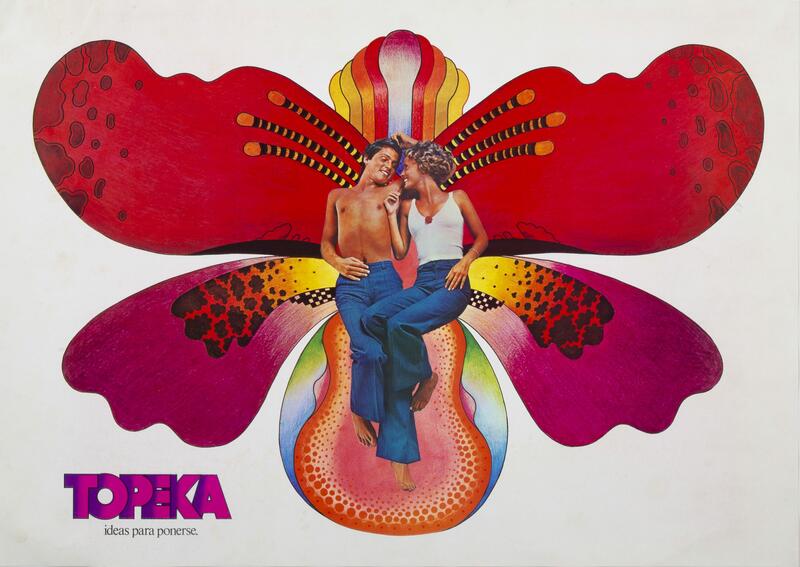
The exhibition Cultura colibrí evoques of the fantasies of the counterculture in Argentina in the 80s and 90s through the chronicle and poetry of the poet, performer and lyricist Fernando Noy as a protagonist of the period and survivor of a generation devastated by the violence of the last military dictatorship and later by the HIV-AIDS crisis.
The exhibition proposes a central space where a dressing room is portrayed as the place of transformation, fantasy, the "getting on", delimited by pink metallic cotillion curtains. This shower of flashes of light leads us to the encounter of a group of works and archival materials by Alejandro Kuropatwa, Mildred Burton, Facundo de Zuviría, Ana Gallardo, Foto Estudio Luisita, Archivo de la Memoria Trans, Batato Barea and Marta Minujín. The space between Cultura colibrí and the exhibition Juguetes rabiosos is separated by a large rough and opaque wall that on one side and the other contains paintings, drawings, photographs and sculptures, artistic productions that reflect on the tragic period of the dictatorship.
-
Edgardo Giménez. Afiche publicitario para la marca de indumentaria Topeka, 1986. Afiche publicitario; impresión offset sobre papel. Colección Museo de Arte Moderno de Buenos Aires. Donación del artista, 2010
-
Delia Cancela, Atributos masculinos, 2010. Tinta sobre papel japonés. 25 x 34 cm. Cortesía de la artista y Galería Herlitzka & Co
-
Alejandro Kuropatwa, Sin título, de la serie Mujer, 2001, fotografía. Cortesía Archivo Alejandro Kuropatwa y Galería Vasari
"The Hummingbird with a capital letter as an emblem of Ephemeral Art perpetuated in its apparent swift flight, symbolizes the rhythm of the successive presentations at the Teatro Parakultural and Cemento, and countless Non-Conventional Spaces where the newly emerged creators performed after Democracy left behind the times of a dark and dismal repression", says Noy, born in a small town in Patagonia in 1951. Hippie in the sixties and seventies and undisputed protagonist of the Buenos Aires underground in the eighties, he relates: "Performances of all the muses, renamed numeritos by the legendary first Clown-Travesti-Literary Batato Barea, summoned an audience (actually acolytes) willing to co-star in the enjoyment of that new era called by the media as Undeground". These "little numbers" happened with the speed and colorful magic of a hummingbird.
Curated by Jimena Ferreiro, the exhibition brings together works and archives of the time by Diana Aisenberg, Archivo de la Memoria Trans, Hugo Arias, Rubén Baldemar, Batato Barea, Mildred Burton, Delia Cancela, Chiachio & Giannone + Agustina Comedi, Marina De Caro, Sergio De Loof, Facundo de Zuviría, Diana Dowek, Martín Farnholc Halley, Alejandra Fenocchio, Luis Frangella, Foto Estudio Luisita, Ana Gallardo, Santiago García Saenz, Edgardo Giménez, Alberto Goldenstein, Federico Klemm, Guillermo Kuitca, Alejandro Kuropatwa, Fernanda Laguna, Bárbara Bianca LaVogue, Alfredo Londaibere, Gustavo Marrone, Marta Minujín, Fernando Noy, Néstor Perlongher, La Chola Poblete, Omar Schiliro, Pablo Suárez, Juan Tessi, Carlos Uría, several of them belonging to the patrimony of the Museo Moderno.
Fernando Noy (San Antonio Oeste, Río Negro, Argentina, 1951). Poet, performer and lyricist. His work has been translated into several languages and appears in anthologies with great poets of all latitudes. He participated in the hipism of the sixties and seventies and was a protagonist of the Buenos Aires underground in the eighties. His memoirs were published in the book Peregrinaciones profanas (2018), in Te lo Juro por Batato, biografía oral de Batato Barea (2001), a book about the legendary first transvestite-literary clown, and in Historia del under (2015). He also publishes in various media and cultural magazines in the country such as the supplement Soy de Página 12. He had radio programs on Radio Nacional and, as an actor, worked in theater, television and film, including participations in Camila (1984) and Yo la peor de todas (1990), directed by María Luisa Bemberg, La dama regresa (1996) by Jorge Polaco, the documentary Rosa Patria (2009) by Santiago Loza, dedicated to the writer Néstor Perlongher, and in Verano Maldito (2010) by Luis Ortega. He composed lyrics later set to music by Egle Martin, Fabiana Cantilo, Paul Dourge, among others. He is a member of Argentores -Sociedad Argentina de Autores Teatrales, SADE and SADAIC. He currently lives in Buenos Aires.



